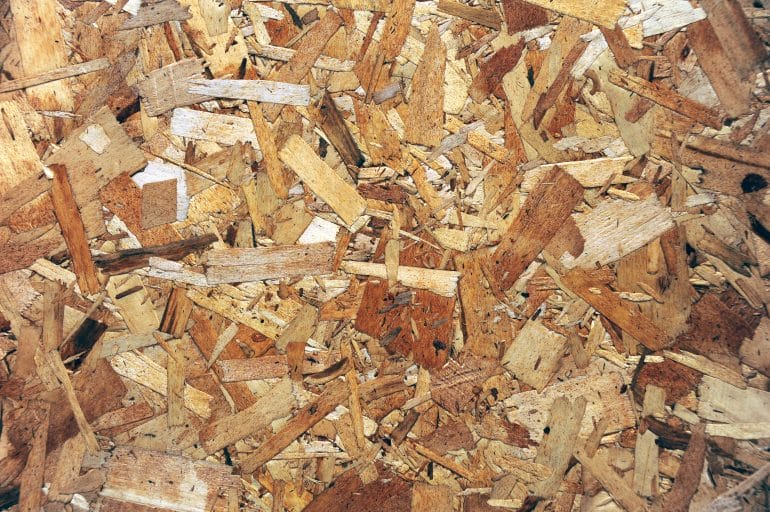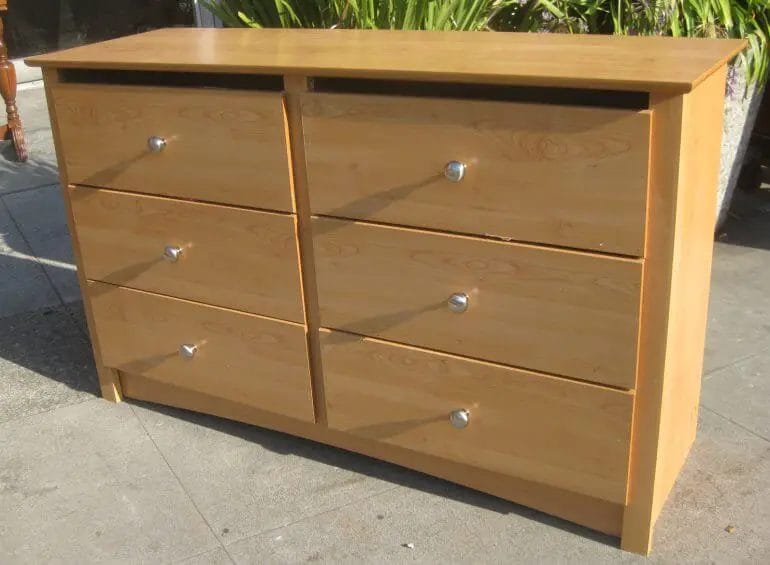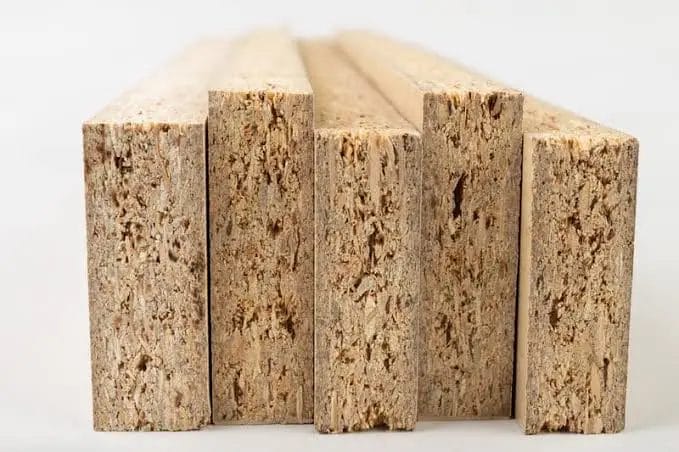Pressed wood, also known as particle board, is a type of engineered wood made from wood particles and adhesive. It is formed by compressing and bonding the particles under high pressure. Pressed wood offers a cost-effective alternative to solid wood, as it is made from smaller pieces of lumber that may otherwise go to waste. It is commonly used in furniture, cabinets, and construction applications. While it is affordable and versatile, pressed wood may have lower durability and moisture resistance compared to solid wood.

Different types of pressed wood and their characteristics
Pressed wood, also known as engineered wood, is a composite material made from wood fibers, particles, or veneers that are bonded together with adhesives under heat and pressure. It is widely used in construction, furniture manufacturing, and other industries due to its affordability, versatility, and environmental benefits. There are several different types of pressed wood, each with its own characteristics and applications.

1. Plywood
Plywood is perhaps the most well-known type of pressed wood. It is made by layering thin sheets of wood veneer and gluing them together in alternating grain directions. This cross-grain construction gives plywood its strength, stability, and resistance to warping. Plywood is commonly used in construction for sheathing, subfloors, and cabinetry.
2. Oriented Strand Board (OSB)
OSB is another popular type of pressed wood that is made from strands of wood that are arranged in cross-oriented layers and then bonded together. It provides strength and stiffness and is commonly used in construction for walls, roofs, and floors. OSB is less expensive than plywood but not as durable.
3. Medium-Density Fiberboard (MDF)
MDF is made from fine wood fibers that are mixed with a resin binder and pressed into panels. It has a smooth and consistent surface, making it ideal for painting and finishing. MDF is commonly used for furniture, cabinetry, and interior trim. It is not as strong as plywood or OSB, but it is more affordable.
4. Particleboard
Particleboard is made from small wood particles and resin that are pressed together to form panels. It is less expensive than other types of pressed wood, but it is also less durable and prone to swelling and sagging when exposed to moisture. Particleboard is often used for low-cost furniture, shelving, and underlayment.
5. Hardboard
Hardboard, also known as high-density fiberboard (HDF), is made from highly compressed wood fibers. It is dense, strong, and resistant to moisture, making it suitable for applications where durability is important. Hardboard is commonly used for flooring, wall paneling, and furniture components.
6. Laminated Veneer Lumber (LVL)
LVL is made by layering thin wood veneers and bonding them together under heat and pressure. It is known for its high strength and stability, making it suitable for structural applications such as beams and headers. LVL is often used in heavy construction and engineered wood products.
In summary, there are various types of pressed wood available, each with its own unique characteristics and applications. Plywood, OSB, MDF, particleboard, hardboard, and LVL offer different levels of strength, durability, and affordability. Understanding the characteristics of each type can help you choose the right pressed wood product for your specific project or application.

The process of manufacturing pressed wood
** Pressed wood, also known as engineered wood or composite wood, is a popular material used in various industries due to its versatility and cost-effectiveness. It is made by compressing and bonding wood fibers, particles, or veneers together using heat, pressure, and adhesives. This process results in a durable and strong material that can be used for furniture, cabinetry, flooring, and construction. **1. Raw Material Preparation
** The first step in the manufacturing process of pressed wood is the preparation of raw materials. The type of wood used can vary depending on the desired characteristics of the final product. Common wood species used include softwoods like pine and hardwoods like oak. The wood is typically obtained from sustainable sources and undergoes a debarking process to remove the outer bark. Once debarked, the wood is chipped or shredded into small pieces. These wood particles or fibers are then dried to remove moisture, as excessive moisture can hinder the bonding process later on. **2. Blending and Forming
** After the raw materials are prepared, they are blended together to create a mixture with consistent properties. Depending on the desired outcome, other additives such as binders, resins, and waxes may be incorporated into the blend. These additives help improve the bonding and performance of the pressed wood. The blended mixture is then fed into a forming machine, which evenly distributes the mixture onto a conveyor belt or into a mold. Pressure is applied to compact the mixture and ensure proper bonding. The thickness and density of the material can be adjusted by controlling the amount of mixture added and the pressure applied. **3. Heat and Pressure Application
** Once the mixture is uniformly distributed, heat and pressure are applied to initiate the bonding process. The temperature and duration of the pressing process depend on the type of adhesive used and the desired properties of the final product. During the pressing phase, the adhesive softens and penetrates the wood fibers, creating strong bonds between the particles. The heat also helps in drying the material and reducing the moisture content further. **4. Cooling and Finishing
** After the pressing phase, the pressed wood is cooled to allow the adhesive to harden and solidify. This step helps in stabilizing the material and ensuring its dimensional stability. Once cooled, the pressed wood can undergo additional processes such as sanding, cutting, and shaping to achieve the desired shape and finish. The material can be coated with varnish, laminate, or other protective finishes to enhance its appearance and durability. **5. Quality Control
** Throughout the manufacturing process, quality control measures are implemented to ensure the final product meets the required standards. Samples are tested for strength, density, moisture content, and other properties to ensure consistency and durability. **** In summary, the process of manufacturing pressed wood involves the preparation of raw materials, blending and forming the mixture, applying heat and pressure, cooling, and finishing. Through these steps, wood fibers or particles are bonded together, resulting in a versatile and cost-effective material used in various industries. Quality control measures are put in place to ensure the final product meets the required standards. Pressed wood continues to be a popular choice due to its strength, durability, and affordability.
Advantages of Using Pressed Wood in Construction
Pressed wood, also known as engineered wood or composite wood, is a popular choice in the construction industry due to its many advantages. Here are some key benefits:
- Cost-effective: Pressed wood is generally more affordable compared to solid wood. It allows builders to lower construction costs without compromising on quality.
- Environmental-friendly: Pressed wood is made from recycled wood fibers, making it a sustainable choice. By using pressed wood, builders contribute to reducing deforestation and waste accumulation.
- Stability: Pressed wood is less prone to warping and shrinking when exposed to changes in temperature and humidity. This stability ensures long-lasting and durable construction.
- Variety: Pressed wood comes in a wide range of sizes, shapes, and finishes, providing builders with endless design possibilities. It can mimic the appearance of various wood species, allowing for versatility in construction projects.
- Workability: Pressed wood is easy to cut, shape, and install, making it convenient for builders and reducing construction time. It can be used for structural purposes as well as decorative elements.
- Fire Resistance: Some types of pressed wood, such as fire-retardant particleboard, offer a higher degree of fire resistance compared to traditional wood. This feature enhances the safety of buildings.
- Insulation: Pressed wood possesses good thermal and acoustic insulation properties. It helps regulate interior temperature and reduces noise transmission, leading to improved comfort in residential and commercial spaces.
Disadvantages of Using Pressed Wood in Construction
While pressed wood offers numerous advantages, it also has some drawbacks that need to be considered:
- Moisture Sensitivity: Pressed wood can be susceptible to moisture damage if not properly sealed or protected. It may swell or rot when exposed to excessive moisture, which can degrade its structural integrity.
- Formaldehyde Emissions: Pressed wood products, especially those made with adhesives, may release formaldehyde gas over time. This gas can be harmful to human health, particularly in poorly ventilated spaces.
- Lower Strength: Compared to solid wood, pressed wood has lower strength and load-bearing capacity. It may not be suitable for heavy structural applications and requires additional reinforcement in certain cases.
- Limited Durability: While pressed wood is generally durable, it may not last as long as solid wood in certain conditions. It is more prone to scratches, dents, and wear, especially in high-traffic areas.
- Limited Resistance to Pests: Some types of pests, such as termites and wood-boring insects, may have a higher affinity for pressed wood. Proper treatment and preventive measures are necessary to protect against pest infestation.
- Environmental Impact: Despite being an eco-friendly choice, the production of pressed wood requires energy and resources. The manufacturing process may also involve the use of adhesives or chemicals that can impact the environment if not properly managed.
Tips for maintaining and caring for pressed wood furniture
Pressed wood furniture, also known as particle board furniture, is a popular choice for many homeowners due to its affordability and versatility. However, it requires proper care and maintenance to ensure its longevity and keep it looking its best. In this section, we will provide you with some useful tips for maintaining and caring for your pressed wood furniture.
1. Avoid exposure to excessive moisture
Pressed wood furniture is highly susceptible to damage from moisture. Therefore, it is important to keep your furniture away from areas with high humidity, such as bathrooms or kitchens. Avoid placing glasses or cups directly on the surface without using coasters, as moisture can seep into the wood and cause it to swell or warp.
2. Use coasters and placemats
To protect the surface of your pressed wood furniture, always use coasters, placemats, or tablecloths when placing hot or cold items on it. This will help prevent heat and moisture damage, as well as scratches or stains from spills.
3. Clean regularly and gently
To maintain the appearance of your pressed wood furniture, it is important to clean it regularly. Use a soft, lint-free cloth or microfiber cloth to dust the surface. Avoid using abrasive cleaners, as they can scratch or damage the finish. Instead, dampen the cloth with water or a mild, non-abrasive cleaner and gently wipe the surface, following the grain of the wood.
4. Avoid direct sunlight
Direct sunlight can cause the color of pressed wood furniture to fade over time. To prevent this, avoid placing your furniture in areas where it will be exposed to direct sunlight, or use curtains or blinds to block out the rays.
5. Handle with care
Pressed wood furniture is not as durable as solid wood furniture, so it is important to handle it with care. Avoid dragging or sliding the furniture, as this can cause scratches or damage to the legs or edges. When moving the furniture, lift it instead of pushing or pulling to avoid any potential damage.
6. Repair any damages promptly
If your pressed wood furniture gets chipped or scratched, it is important to repair it promptly to prevent further damage. You can use wood fillers or touch-up markers that match the color of the furniture to fill in any gaps or scratches. Follow the instructions on the product for the best results.
7. Use protective pads or felt
To prevent scratches or dents from heavy objects or furniture legs, consider using protective pads or felt on the bottom of items to create a barrier between the furniture and the floor. This will help preserve the integrity of the furniture and prevent any potential damage.
8. Avoid excessive weight
Pressed wood furniture is not designed to support heavy weight, so it is important to avoid placing excessive weight on its surface or shelves. This can lead to sagging or even breakage. Be mindful of the weight capacity indicated by the manufacturer and distribute weight evenly across the furniture.
9. Store with care
If you need to store your pressed wood furniture, make sure to do so in a dry and climate-controlled environment. Avoid storing it in areas with extreme temperature fluctuations or high humidity, as this can cause damage to the wood.
In summary, maintaining and caring for pressed wood furniture involves avoiding excessive moisture, using coasters and placemats, cleaning regularly and gently, avoiding direct sunlight, handling with care, repairing damages promptly, using protective pads or felt, avoiding excessive weight, and storing with care. By following these tips, you can extend the lifespan of your pressed wood furniture and keep it looking beautiful for years to come.
FAQs
What is pressed wood?
Pressed wood, also known as engineered wood or composite wood, is a type of wood product that is made by binding together wood fibers or particles using adhesive under high pressure and temperature. It is commonly used in construction, furniture, and cabinetry.
Can pressed wood be painted?
Yes, pressed wood can be painted. However, it is important to properly prepare the surface by sanding and priming it before applying paint. This helps to ensure better adhesion and a smoother finish.
Is pressed wood durable?
Pressed wood can be durable, but its durability depends on factors such as the quality of the wood fibers used, the type of adhesive, and the manufacturing process. Higher-quality pressed wood products tend to be more durable and have better resistance to moisture and warping.
Conclusion:
In conclusion, pressed wood is a versatile and cost-effective alternative to solid wood. Its manufacturing process involves compressing wood fibers or particles with adhesive to create a strong and durable material. Pressed wood offers a wide range of applications, from furniture to flooring to cabinetry, making it a popular choice in various industries. It provides the look and feel of solid wood at a fraction of the cost, making it an economical option for both homeowners and businesses.
However, it is important to note that pressed wood may have some drawbacks, such as potential for off-gassing of formaldehyde in certain products. It is crucial to choose products with low formaldehyde emissions or opt for alternative materials if you have concerns about indoor air quality. Overall, pressed wood is an excellent choice for those looking for affordability, versatility, and sustainability in their wood-based products.
